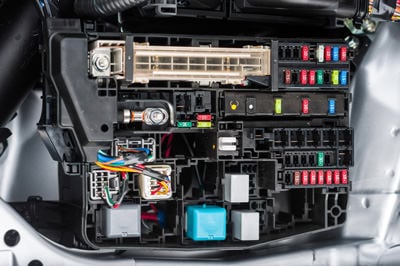Streamline operations with dedicated mechanical system optimisation support.
Leading Tips for Effective Electrical System Troubleshooting
Fixing electric systems requires a systematic approach, grounded in an extensive understanding of electrical concepts and safety and security procedures. The subtleties of reliable troubleshooting expand beyond plain technological expertise; comprehending how to document findings and prioritize security can significantly affect results.
Understand the Basics
Comprehending the basics of electric systems is necessary for reliable troubleshooting, as a solid foundation permits technicians to identify and solve concerns more effectively. A detailed grasp of electrical principles, such as voltage, current, resistance, and power, is vital in identifying the origin triggers of troubles. Voltage is the electric potential difference that drives current via a circuit, while resistance opposes the circulation of existing, impacting the overall performance of the system.
Familiarity with circuit components, including resistors, capacitors, diodes, and switches, is also critical. Each element plays an unique role in circuit habits and can impact performance when malfunctioning. In addition, understanding collection and identical circuit setups is important, as these setups affect the distribution of voltage and present within the system.
Additionally, expertise of safety protocols is indispensable. Technicians should know potential hazards, such as shock and short circuits, to implement safe troubleshooting practices. By mastering these foundational concepts, professionals enhance their capacity to perform effective diagnostics and fixings, eventually causing boosted performance and dependability of electrical systems. This fundamental knowledge is the keystone of effective repairing endeavors.
Gather Necessary Tools
Efficient troubleshooting of electric systems calls for the appropriate set of devices to diagnose and fix issues precisely. A fully equipped professional can considerably boost effectiveness and performance in recognizing troubles. Crucial tools include a multimeter, which measures voltage, present, and resistance, permitting specific examinations of electric components. Clamp meters are likewise valuable for determining existing without separating the circuit, ensuring safety and security and convenience.
Additionally, protected hand tools such as screwdrivers, pliers, and cable pole dancers are vital for safely manipulating electric links. It is likewise suggested to have a circuit tester available to validate the visibility of voltage in outlets and cables. For even more complicated systems, a thermal imaging camera can aid identify overheating components, showing potential failures.

Follow a Methodical Approach
Having collected the proper tools, the next action in repairing electrical systems is to comply with a methodical method. A methodical technique ensures that professionals can identify mistakes efficiently and properly, reducing downtime and protecting against unnecessary repairs.
Begin by examining the system's schematic layouts and specifications. Comprehending the style and operational parameters will supply context for identifying issues. Next, isolate the trouble area by utilizing a process of removal. This entails monitoring each component systematically, starting from the power resource and functioning in the direction of the lots.
Utilize testing devices, such as multimeters and oscilloscopes, to collect unbiased information concerning voltage, present, and resistance at various points within the system. This empirical proof will assist your troubleshooting efforts and help useful source to verify or get rid of possible reasons for failure.
In addition, consider environmental variables that link may affect the system's efficiency, such as temperature changes or wetness access. A detailed evaluation of circuitry, links, and parts will certainly guarantee that all opportunities are accounted for.
Paper Your Searchings For
Complete documentation is important in the troubleshooting procedure of electrical systems. This method not just aids in comprehending the root reason of the trouble but also serves as a referral for future troubleshooting efforts.

Additionally, maintaining a log of components changed or repair work carried out is invaluable. This info supports supply monitoring and can help assess the longevity and dependability of certain components.
Inevitably, the documents procedure ought to be comprehensive yet concise, allowing simple access and evaluation - electrical system troubleshooting. By focusing on in-depth paperwork, specialists can produce a beneficial expertise base that not just aids in current troubleshooting but also empowers future upkeep efforts, thereby improving total system reliability

Prioritize Precaution
Acknowledging the inherent risks connected with electrical systems is crucial for guaranteeing safety during troubleshooting. Electric shock, burns, and devices damage are simply a few of the prospective risks that service technicians encounter. Prioritizing precaution is not just a lawful responsibility however additionally an ethical important that safeguards both the specialist and the surrounding environment.
Before beginning any troubleshooting job, specialists should put on appropriate personal safety equipment (PPE), consisting of protected handwear covers, shatterproof glass, and flame-resistant apparel. Ensuring that the job area is dry and devoid of mess can dramatically minimize the threat of mishaps. In addition, it is necessary to de-energize circuits prior to beginning any work, validating that they are not endure making use of a multimeter or voltage tester.
Developing clear interaction protocols with team participants is additionally essential; this makes sure that every person knows possible hazards and the standing of the electrical system being worked with. Having an emergency situation response plan in area can verify vital in the event of an event. By focusing on find out precaution, professionals can efficiently minimize risks and cultivate a much safer office.
Conclusion
Effective electrical system repairing counts on a comprehensive understanding of basic concepts and a methodical strategy. Focusing on safety and security actions guarantees the well-being of people involved and the integrity of the electrical system.